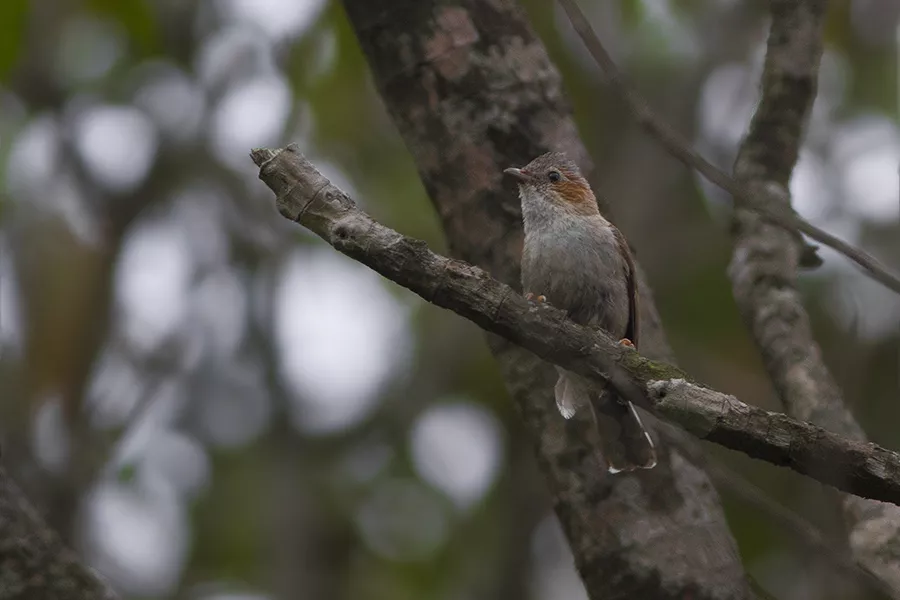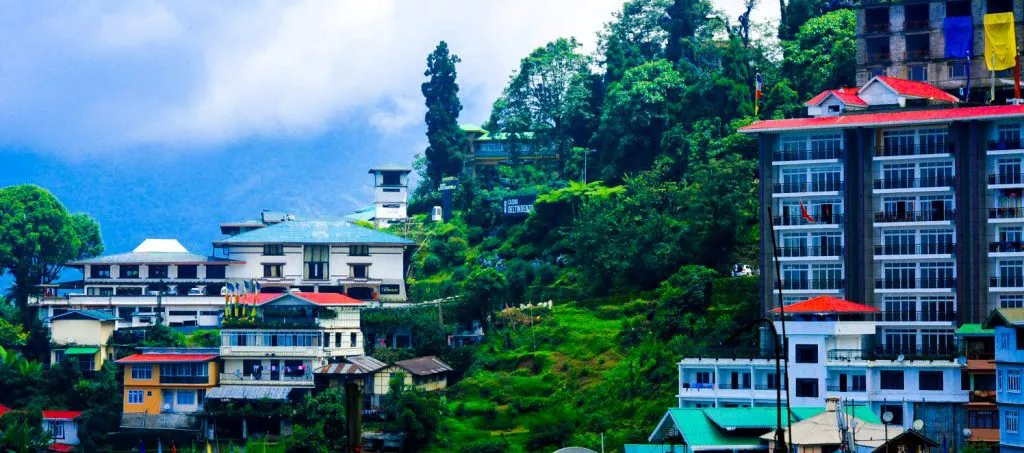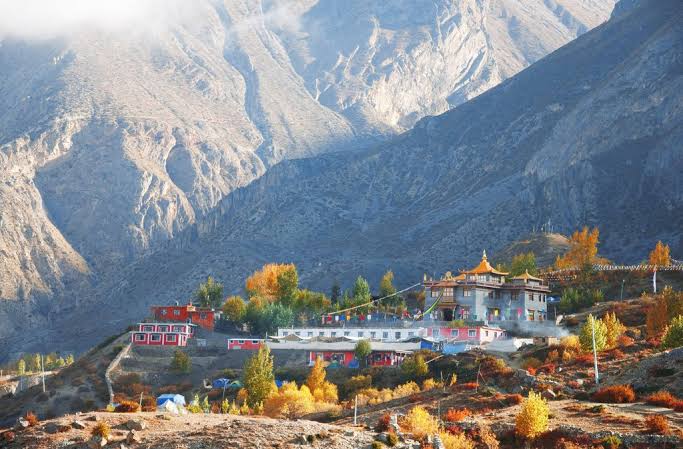
Mahananda Wildlife Sanctuary is located at the foothills of the Himalayas, between the Mahananda and Teesta rivers. It is situated in the Darjeeling district and comes under Darjeeling Wildlife division and can be reached from Siliguri in 30 minutes. Sukna, the gateway to the sanctuary, is only 13 km from Siliguri and 28 km from Bagdogra airport and 2.5 hours drive from Darjeeling
The sanctuary sprawls over 159 km2 of reserve forest and in 1959, it got the status of a sanctuary mainly to protect the Indian bison and royal Bengal Tiger. The forest type in Mahananda Wildlife Sanctuary varies from riverain forests like Khayer-Sisoo to dense mixed - wet forest in the higher elevation in Latpanchar area of Kurseong hills.
Grey Chinned Minivet at Mahananda Wildlife Sanctuary
The variation in altitude and forest types helps the existence of a large number of species of mammals, birds and reptiles. The altitude varies from 500 ft at the southern range of Sukna forest to the height up to 4,500 ft at Latkothi. Latpanchar actually forms the highest part of the Sanctuary, with an average altitude of 4200 ft.
Mahananda Wildlife Sanctuary includes some endangered species like Rufous-necked Hornbill, Oriental Pied Hornbill, Great Hornbill etc. Among the others swallow, swift, thrush, swift, babbler, warbler, roller, minivet and sunbird can be found in abundance.
Some unusual species of mammals are reported from this region like Himalayan serow, Himalayan porcupine, Himalayan Black Bear and even more rarer like Binturong and Clouded Leopard. Other important mammalian species include Indian bison, chital (spotted deer), Indian elephants, barking deer, rhesus monkey, sambar, many species of lesser cat like fishing cat and jungle cat, leopard etc.
The Park presently has 3 categories of giant safaris - Blended Herbivore Safari, Tiger Safari and Asiatic Black Bear Safari & Zoo Parks. Best time to visit here is in the months from December to March. Also in Feb - March duration, spotting Hornbills can be a great adventure of visitors.






